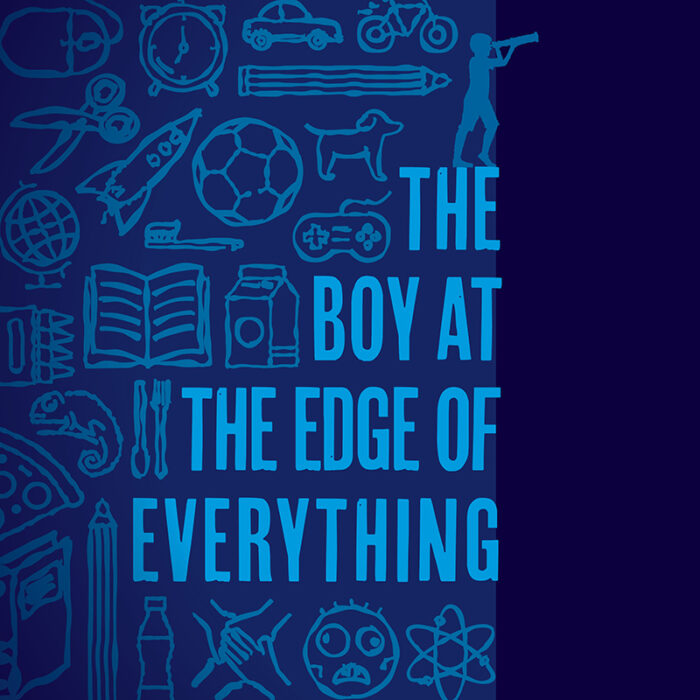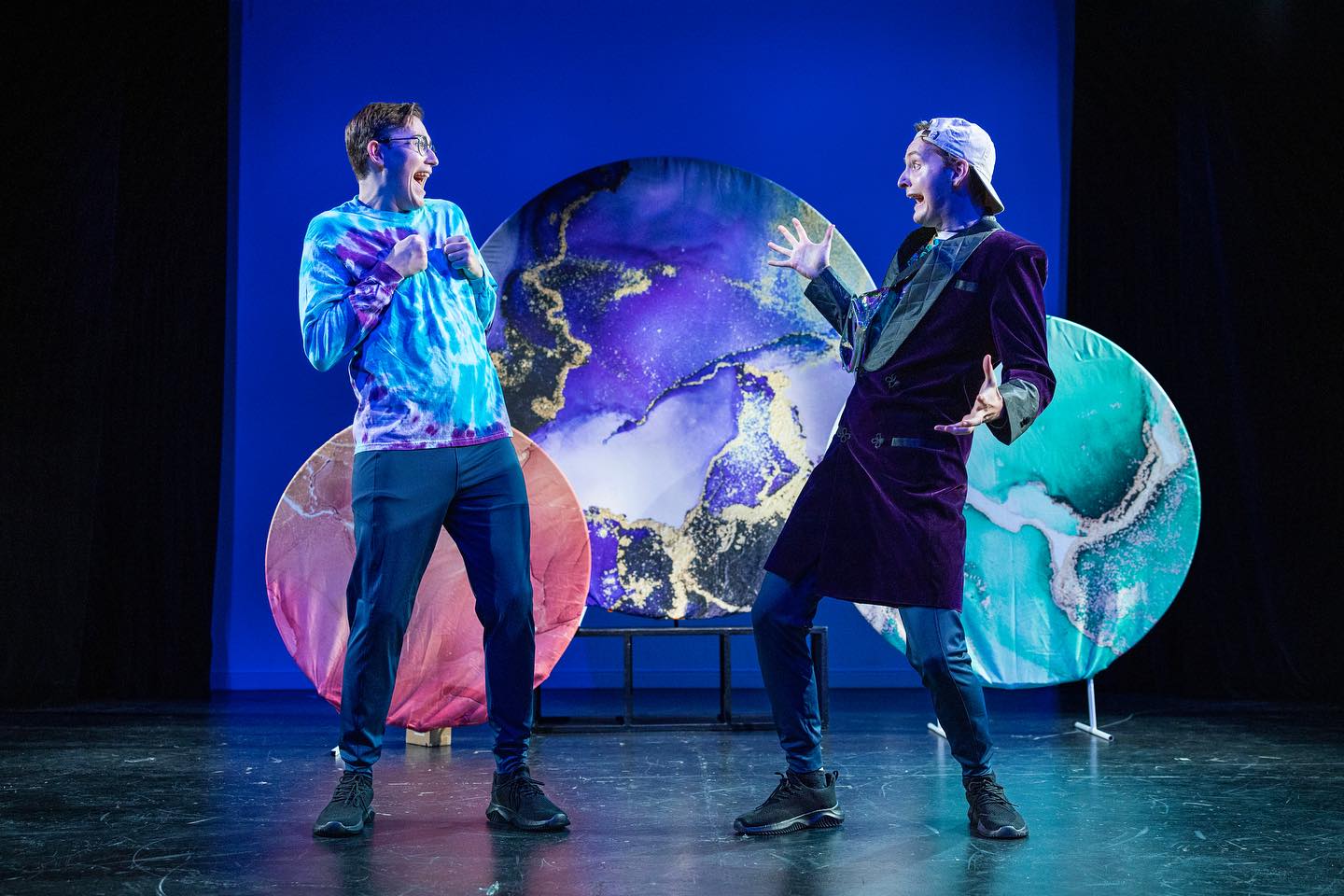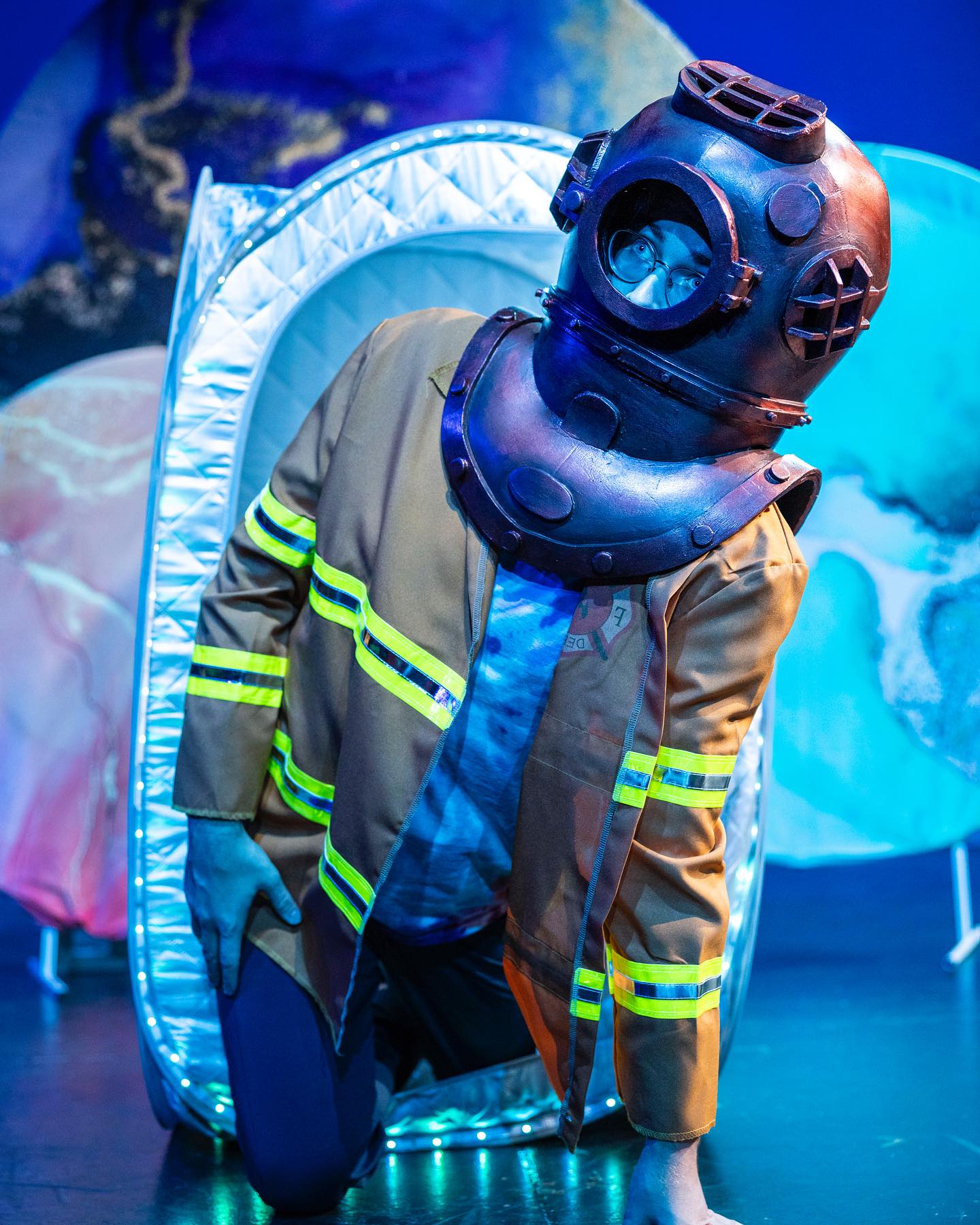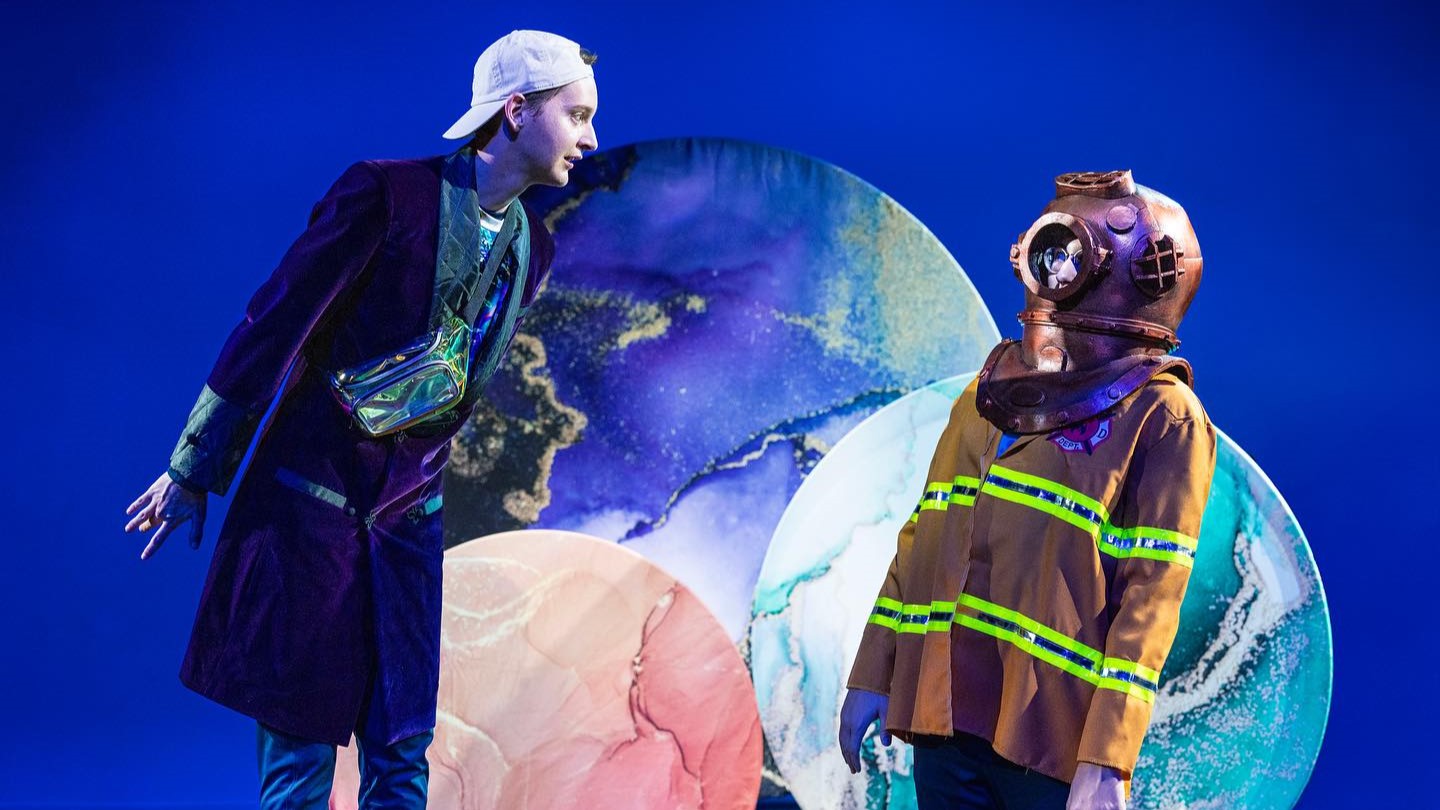PROVO — Every year, BYU Young Company stages two productions that tour local elementary schools. One is a Shakespeare show, and the other is a modern play. The Shakespeare productions tend to work, but the modern productions are hit or miss. This year’s modern show, The Boy at the Edge of Everything, is one of the company’s hits. Indeed, it is my favorite BYU Young Company production in years.

In The Boy at the Edge of Everything, young Simon Ives is full of anxiety about school, his many activities, his family, and more. When he accidentally gets launched into space, he travels to the end of the universe, where he meets the title character. There, the boy (or “Edge Boy” as Simon playfully names him) is an immortal being who can watch any planet and spend time doing anything. The two make fast friends, but Simon misses his family when he learns that not only did life go on for them without him, but they and the entire planet Earth are gone because so much time has passed. Finegan Kruckemeyer‘s script has a surprisingly wide range of emotions packed into its 65 minutes. This is not a play that infantilizes its audience; it includes moments of joy, wonder, profound loss, and more. Many adult scripts have less emotional range.
As Simon Ives, DJ Bohman has an uncanny ability to replicate the mannerisms of an anxious 12-year-old. The script gives no diagnosis for Simon, but Bohman’s performance is believable as a boy with an anxiety disorder and perhaps high-functioning autism. But Simon is not defined by any labels; he is just a boy who happens to have challenges, which is a refreshing approach to this type of character. Despite any challenges Simon may have, I found the character very relatable, mostly because of Bohman’s affability and youthful eagerness. He also has the charisma for a leading role, which serves the production well.
As the Boy, Braden Johnston was eccentric. The character is a sharp contrast with Simon, and I struggled to connect with him at first. But then it dawned on me: the character is an alien. The Boy should be odd and foreign. Who am I to dictate to Johnston how his character should behave? I have never met any creatures living at the edge of the universe. For all I know, Johnston perfectly imitated such a being in every way. And so, in time I accepted his performance and learned to embrace it. I especially loved how the Boy and Simon’s friendship progressed from awkward small talk to discovering shared passions. It was a moment that encapsulates this play’s mixture of the realistic and the fantastical.

The other four cast members made valuable contributions to the play. Marie Jacobs and Jacob Hogge played Simon’s overachieving parents. The two were the perfect distracted, well-meaning parents, and their pushiness was true to life. The dinnertime scenes after Simon is blasted into space were poignant in showing how they were coping with loss. The performance from Isabel Ownby as Louise (Simon’s younger sister) contributed to greatly to the mood and sense of mourning in these scenes. Finally, Lauren Duffin rounded out the cast and kept the level of talent and energy high during her scenes.
However, the real star of the show is Rebeca Wallin’s directing. The smooth transitions between scenes and locations ensured that the play kept my 5-year-old’s attention. More importantly, Wallin infused the play with a sense of wonder. Whether the focus was on something fantastical (like Simon’s space capsule and his journey) or more mundane (like meeting a new friend), the play had a childlike sense of awe. I also appreciated Wallin’s willingness to experiment, such as her choice to have the play staged in a corner of a black box, with the audience seated at two sides: downstage and stage left. This choice smashes the tyranny of the proscenium and keeps most of the audience close to the action.
The work from production designer Kim Wright was one of the strongest aspects of this production. BYU’s productions for young audiences have to be able to tour local schools, and so minimalism is the rule for these shows. But the need for mobility was not a hurdle for this production. Three lovely planets dominate the set, which also includes a platform that represents the Boy’s home. The costumes showed character clearly, and I liked the tie dye T-shirts for the two main characters, which signaled that Simon and the Boy had something in common even before they met. The use of matching black sneakers and dark blue athletic pants for the entire cast was unifying and provided a base that other costume pieces could easily match with. However, while the tight cutting of the pants is in style right now, it also revealed a bit too much about the male actors. I recommend that they wear a dance belt or similar concealing undergarment in future performances.

BYU Young Company’s The Boy at the Edge of Everything is a play of paradoxes. It is intimate, but also has action that spans time and space. Its main characters are, literally, from different galaxies — but become best friends. Best of all, it is a play aimed at children that their parents can also enjoy.
[box]The BYU Young Company production of The Boy at the Edge of Everything plays Wednesdays through Fridays at 7 PM and Saturdays at 2 PM and 4 PM through November 18 at the Studio Theatre in the West Campus Building on the campus of Brigham Young University. Tickets are $8-11. For more information, visit arts.byu.edu.[/box]

